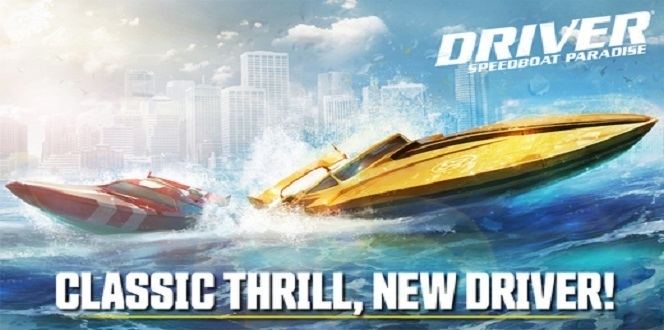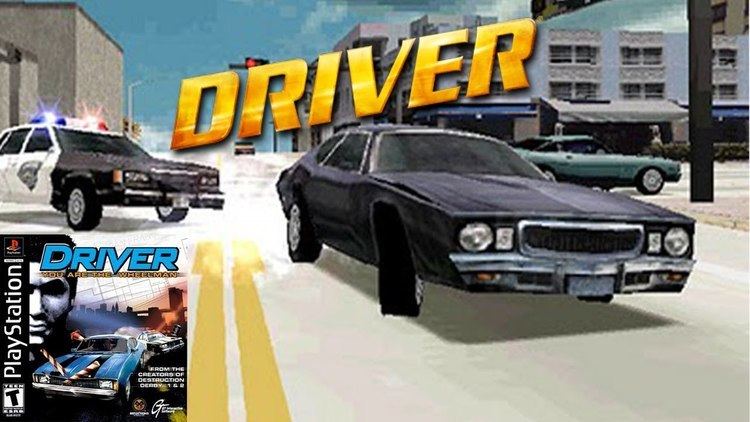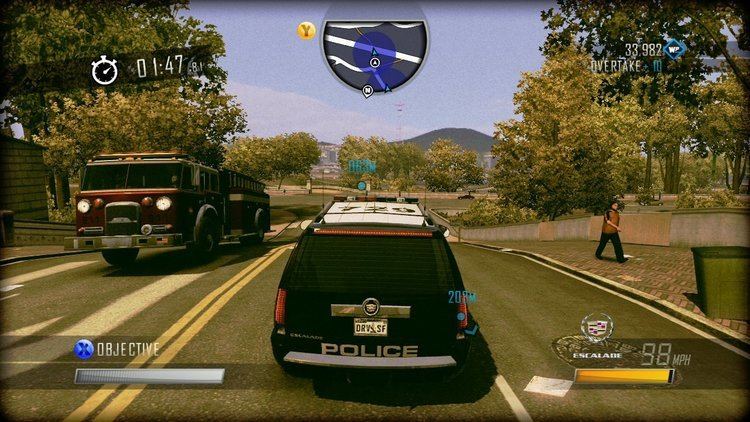Creators Martin Edmondson Designer Atari | First release Driver
30 June 1999 Publishers GT Interactive, Ubisoft | |
 | ||
Developers Ubisoft Reflections
Sumo Digital
Ubisoft Composers Allister Brimble (Driver)
Allister Brimble & Rich Aitken ('2)
Rich Aitken & Marc Canham (3, Parallel Lines, San Francisco) Latest release Driver: Speedboat Paradise
December 2014 Genres Action-adventure game, Racing video game | ||
History of driver 1999 2011 blablue123
Driver is a series of mission-based action-adventure video games developed by Reflections Interactive (now Ubisoft Reflections), and originally published by GT Interactive, later by Atari and now by Ubisoft. The gameplay consists of a mixture of action-adventure and driving in open world environments. Since the series began in 1999, there have been five main installments released.
Contents
- History of driver 1999 2011 blablue123
- Svgr driver series
- Driver
- Driver 2
- Driver 3
- Driver Parallel Lines
- Driver 76
- Driver San Francisco
- Driver Renegade 3D
- Driver Speedboat Paradise
- Related games
- COP The Recruit
- Watch Dogs
- The Crew
- Film adaptation
- References

As of August 2011, the series has sold more than 16 million units worldwide.
Svgr driver series
Driver

The first game of the Driver series was released for the PlayStation on June 30, 1999 in the US. It was later released for Game Boy Color in April 2000, Windows in September 2000, Mac in December 2000, and iOS in December 2009. In the game, the player controls a former racecar driver turned undercover police detective named John Tanner. It featured a storyline inspired by 1970's car chase movies such as Bullitt (1968) and The Driver (1978) and based in four real-life cities; Miami, San Francisco, Los Angeles and New York City. It was the best selling game of the Driver series and an evolution of the freedom to explore a city as brought forth in the early "Grand Theft Auto" games.
Driver 2

The second installment in the Driver series was released for the PlayStation on November 13, 2000 in the US by Infogrames (now known as Atari), and later ported to the Game Boy Advance on October 4, 2002 in the US. It featured detective John Tanner once more, along with a new partner, detective Tobias Jones, in four more real-life cities (Chicago, Havana, Las Vegas, and Rio de Janeiro). It was the first game in the series to feature 2-player modes, curved roads, and the ability to get out of the car at any time (Apart from while being in a pursuit from the police) in order to steal another car on the street.
Driver 3
The third installment in the Driver series and the first to get an M Rating by the ESRB (the first two were rated T), was released for the PlayStation 2 and Xbox on June 21, 2004 in the US to generally mixed or poor reviews (despite new features such as the ability to use firearms). The game takes place in Miami, Nice and Istanbul. It was subsequently followed by versions for Windows, and Game Boy Advance. Reflections later paid notice to the complaints about the insipid story line, poor controls, and abundance of glitches in order to improve the series' standings with critics and gamers in Driver: Parallel Lines.
Driver: Parallel Lines
The fourth game in the series, Driver: Parallel Lines, was released March 14, 2006 for PlayStation 2 and Xbox in the US, and June 26, 2007 for Windows and Wii in the US. It is the most violent of the series—the first one to receive an 18 rating in the UK. Reflections intended Parallel Lines to "return the series to its roots" by focusing more on driving.
The game differs greatly in other aspects from its predecessors, though, as the story no longer follows undercover police officer Tanner and the game takes place in only one location, New York City. The new main player's name is TK, a criminal rather than a cop. The game includes two time periods, 1978 and 2006, when the main player is sentenced to prison for 28 years and returns in 2006. The game received better reviews, but unlike Driver 3, did not sell particularly well.
Driver 76
Driver 76 is a PlayStation Portable exclusive game in the Driver series. Set in New York City in 1976, two years before the events in the first half of Driver: Parallel Lines, the player takes the role of Ray, TK's friend and a supporting character from Parallel Lines. The game was developed by Sumo Digital and Reflections, and was the first Driver game published by Ubisoft after they acquired Reflections. It was released on May 8, 2007 in the US.
Driver: San Francisco
This fifth Driver game was long rumored to be in production. After several years of speculation, Ubisoft finally unveiled Driver: San Francisco at E3 2010. After several delays, it was finally released on September 1, 2011 in Australia.
The game takes place in only one location, San Francisco, and follows the series protagonist, Tanner, being in a coma after suffering an accident. Thus, the player controls Tanner during his coma dream. The plot of the Wii version of Driver: San Francisco is completely different from the other versions. It is a prequel to the events of the original Driver.
For this game, developers decided to remove the ability to get out of a car in order to steal another car on the street. Instead, they created a new mechanic called "Shift", enabling the players to shift to any car at any time.
The game received generally positive reviews, getting the highest ratings in the whole series after Driver 1. Like Driver 3, it sold particularly well.
Driver: Renegade 3D
Exclusive for the Nintendo 3DS, Driver: Renegade 3D follows John Tanner trying to take down the New York City crime mobs with his own hands. It was released on September 1, 2011 in Australia.
Driver: Speedboat Paradise
A free-to-play smartphone game released on iOS and Android in December 2014. The game, which makes use of in app purchases, revolves solely around missions on speedboats.
Related games
Driver: Vegas (released in 2006) and Driver: LA Undercover (released in 2007) are two mobile exclusive games featuring John Tanner. Vegas features his exploits in Las Vegas in an attempt to exact revenge on Charles Jericho after Driver 3, while LA Undercover, set two years later, features Tanner's exploits in Los Angeles to take down the Los Angeles Mafia by working his way up the ladder.
C.O.P. The Recruit
On November 3, 2009, Ubisoft released C.O.P. The Recruit for Nintendo DS. It was originally registered under numerous names, one of which being "Driver: The Recruit".
Watch Dogs
The Disrupt engine for Watch Dogs was originally intended for a different game focused on driving, potentially in the Driver franchise. Amongst other things this new engine will even "simulate the way people drive cars".
Ubisoft Reflections staff who had previously worked on Driver: San Francisco, were shown to be collaborating with Ubisoft Montreal on the development of Watch Dogs.
The Crew
The Crew (video game) is a 2014 online racing video game set in a large open world map across the United States developed by Ivory Tower and Ubisoft Reflections and published by Ubisoft for Microsoft Windows, PlayStation 4 and Xbox One, with an Xbox 360 port developed by Asobo Studio.
Film adaptation
In February 2002, Impact Pictures, the production team of Paul W. S. Anderson and Jeremy Bolt, announced that it had acquired the film and TV rights to adapt the Atari video game Driver. Screenwriters James DeMonaco, Todd Jason Harthan, and James Roday were developing a script at the time. Impact Pictures had originally intended to produce the film Driver to coincide with the release of the video game Driver 3. The following November, Impact Pictures announced its plans to produce a $50 million adaptation of Driver after wrapping up principal photography on Resident Evil: Apocalypse. In April 2006, Rogue Pictures acquired the film rights to Driver from Impact Pictures and Constantin Films, the production companies responsible for the Resident Evil film franchise. Roger Avary replaced the original screenwriters in writing the script for Driver, as well as directing the film.
Prior to January 2007, Driver, having a budget of $48 million, was slated to shoot at Cinespace Studios' MT28 lot in Toronto, Ontario, Canada. Due to a waterfront revitalization project, the studio was forced to move and the film was put on hold. In May 2009, the movie script was leaked on the internet.
